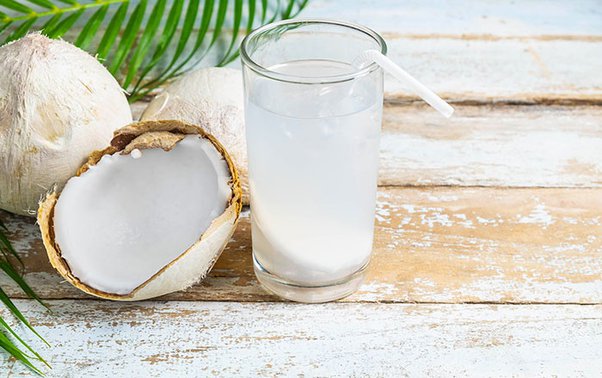
Have you ever wondered about the incredible science behind the formation of water inside coconuts? How is the water in coconut formed? These tropical fruits not only provide a delicious treat but also house an incredible thirst-quencher – coconut water.
But how is the water in coconut formed? In this article, we’ll dive deep into the natural process behind its creation, exploring the secrets from the coconut tree’s roots to the sweet liquid that awaits within.
So grab your coconut and let’s embark on a scientific and refreshing adventure!
How Is The Water In Coconut Formed
The Life Cycle Of A Coconut

Before we unravel the mystery, let’s grasp the lifecycle of a coconut, which plays a vital role in water formation. Understanding the coconut’s journey from a budding flower to a mature fruit will provide the context necessary to comprehend how the water is formed.
1. The Blossoming Stage:
- Coconuts begin their journey as flowers, blooming majestically atop the coconut tree.
- These flowers bear both male and female reproductive organs, encapsulating the potential for a coconut to emerge.
2. The Pollination Process:
- To form a coconut, pollination is crucial. This process is typically aided by insects, like bees, that transfer pollen from the male to the female flowers.
- The transfer of pollen triggers the fertilization stage, setting the course for the coconut’s development.
3. Coconut Development:
- Once the flowers are pollinated, they begin to develop into coconuts.
- Each coconut develops within a protective, fibrous husk, gradually growing in size until maturity.
The Water Formation Process

READ ALSO: Ministry Of Foreign Affairs Proposes New Passport Application Fee: Checkout
Now that we understand the lifecycle of a coconut, let’s explore the captivating journey of how the water within it is formed. Prepare to be amazed by the intricate natural processes at play!
1. The Transfusion of Nutrients:
- The coconut tree transports essential nutrients from the soil to the developing coconut using a system of roots, stem, and leaves.
- Through osmosis, water and nutrients permeate the tree until they reach the coconut.
2. Nature’s Filter: The Endocarp:
- The endocarp acts as a natural filter, allowing vital substances into the coconut while keeping out potentially harmful elements.
- This unique structure permits water vapor to enter the interior of the coconut, allowing for the formation of water droplets.
3. A Quenching Deluge: Condensation and Absorption:
- As the coconut grows, the air space within it becomes saturated with moisture.
- This moisture-rich environment, combined with temperature fluctuations and the protection provided by the endocarp, leads to condensation.
- The coconut’s walls act as sponges, absorbing the condensed droplets, thus forming the delightful coconut water.
4. Nutritional Transformation:
- During the maturation process, the water inside the coconut undergoes chemical changes.
- As the coconut ripens, the water gradually transforms into the deliciously sweet, nutritious liquid we love.
Unveiling FAQs About Coconut Water Formation
1. Is coconut water the same as coconut milk?
- No, they are not the same. Coconut water is the clear liquid inside the coconut, while coconut milk is made from the grated white flesh.
2. Is coconut water sterile?
- While coconut water is not entirely sterile, it has natural antimicrobial properties that inhibit the growth of harmful bacteria.
3. Can coconut water replace regular water for hydration?
- Coconut water is a refreshing and hydrating beverage, but it should not replace regular water entirely. It can be an excellent alternative for staying hydrated, but balanced fluid intake is essential.
After unravelling the captivating journey of how the water in a coconut is formed, we can appreciate the wonders of nature’s ingenuity. From pollination to absorption, the coconut tree orchestrates an intricate symphony to produce the thirst-quenching liquid we all enjoy.




